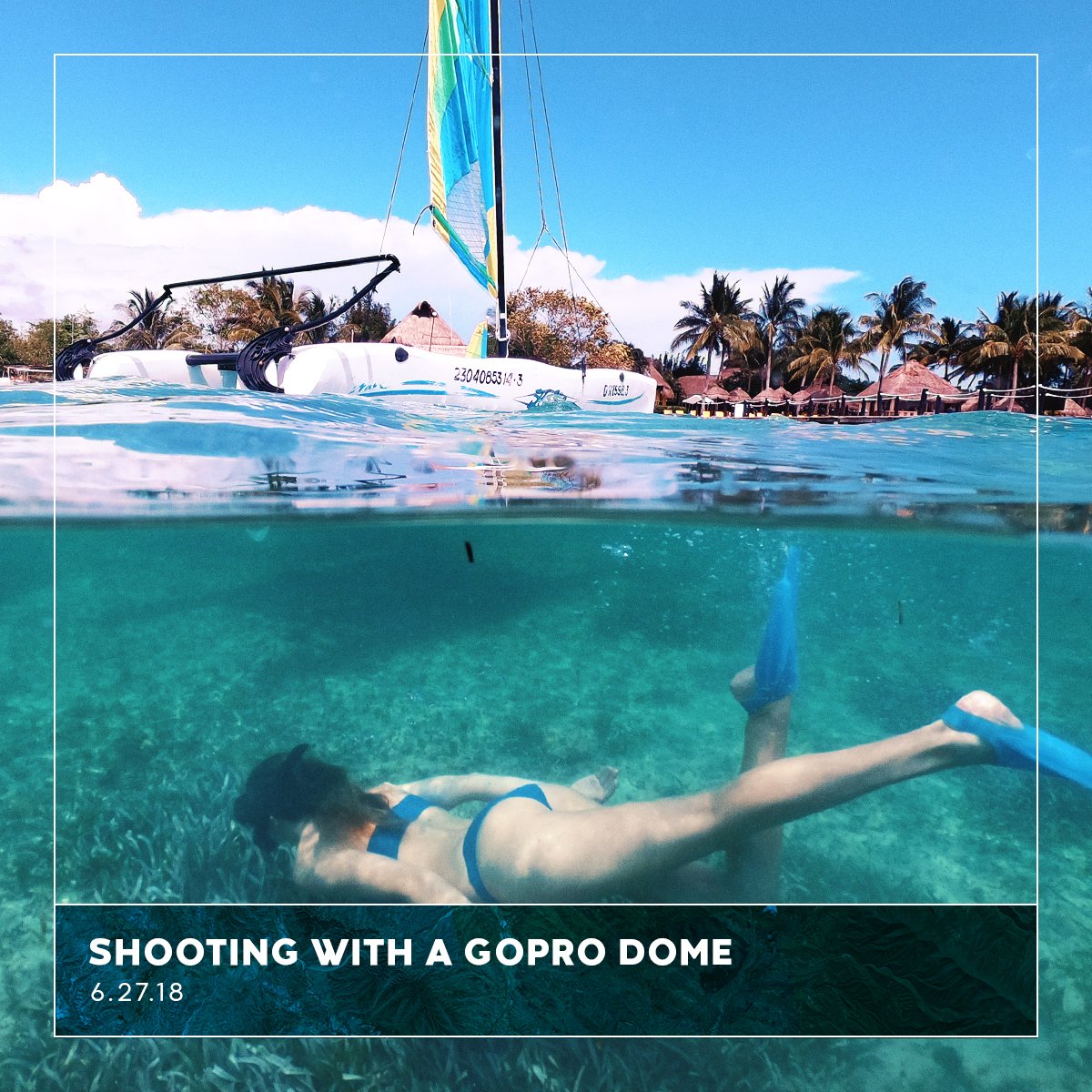-- Summer’s finally here! To help you on your summer adventures, here a quick rundown on how to shoot awesome over/under shots with a GoPro. --
During this shoot, we used the PolarPro FiftyFifty and a Hero6, but these tips apply to any GoPro as well as other dome style camera ports.
Getting Started
First, it’s important to practice with your specific camera dome before you take it out on a shoot. Practice your framing and different field of views in a pool or even a bathtub. When shooting in the ocean, or even in larger freshwater lakes, you’re going to experience short or long period swells, (i.e. moving water, especially at the surface) and as you try and keep a steady shot, don’t expect all of your shots to come out perfect. Out of a dozen shots, you’re likely to keep one or two that are true to your creative intent.
Camera Settings
Shooting with the GoPro Hero6 and the PolarPro FiftyFifty dome, we’ve found that it’s best to set the GoPro at 2.7K @ 120fps and using a medium feild of view (FOV). Video tends to look smoother in 2.7K high resolution at 120 frames per second when slowed down, and the wide FOV lets you fit larger subjects into your frame. You can try a super wide view as well for an even larger frame, but you risk warping the portion of your frame above the waterline, as well as vignetting from the edges of the dome lens. If shooting underwater, you can use the super wide angle to capture your scene with the widest possible frame, and then crop out any vignetting.
Framing Your Subject
Over/under content looks much more compelling when you have a subject underwater that’s close to the dome. Check out the example below where the boat is the main subject:

Not bad, but the same picture with a closer subject underwater looks much more captivating:

Lighting
One final thought to consider before you head out to shoot is lighting. We all know the magic that the soft light of golden hour brings when shooting content above water, but lighting considerations when shooting underwater is a bit different. If you try shooting during golden hour with an over/under dome the above water portion will probably look great, however, the underwater portion will be under-lit. Shooting with the sun high in the sky is going to give you much more light penetration underwater for an even exposure above and below the water line.
Now that we have the basics down, let’s cover three different types of shots you can achieve with an over/under dome.
1. “The 50/50”
The 50/50 is your standard split level shot with the dome half above/half below the water surface. Line up the dome lens so that it is half above and below the water, and try to hold it as steady as possible when taking your shot so that the waterline is level and clearly defined. This type of shot is easiest in calm water but a turbulent waterline can also help establish your scene. You’ll need to find a balance here between water splashes, a clear waterline, and your subject matter. Because the waterline changes, fire off a couple of shots to make sure the composition is to your liking. Here is an example shot:

2. “The Fishbowl”
For this shot, you going to have the dome angled downward with a majority of it under water. About 30% of your shot will be comprised of above water and 70% below. This is good for deeper shots where you want to reveal more of the underwater terrain and less above water. Again, be sure everything is lined up in your shot and you’ll accomplish something like this:

3. “The Submarine”
This is the opposite of the fishbowl, with about 70% of the shot being comprised above the waterline and 30% below. It’s called the submarine because you need to go underwater if you want to monitor your LCD screen when executing this shot. Here’s an example:

Final Thoughts
One thing that frustrates those using a dome for the first time to capture split level shots above and below the waterline is that water tends to bead up on the portion of the dome above the waterline when the water gets splashed against it, or when the waterline moves up or down, or changes angles.
Give yourself a fighting chance against water spots and use Rain X or a similar water-repellant before each shoot, and rub it in with your fingers so you don’t scratch the glass. If you’re in a bind you can also spit–yes, spit– on the dome to help water bead off. After applying a water repellant, dunk the dome underwater to clear any water spots, and repeat when needed.
The size of your camera dome port will also determine how hard it is to get over/under or split-level shots with. Standard and larger diameter domes, from about 4”-6”, have more area to create your waterline, and more room for the above and below framing of your shot. If you want to squeeze an entire whale shark up close into the lower portion of your frame, be sure to pick a larger size dome. That said, remember that you’re going to have to travel with the dome, along with all your other camera equipment. If you’re strapped for space, you might want to consider a smaller dome, which is still better than nothing to help push out that waterline for a wider view.
For more on using a dome to capture cool split level shots, check out our quick over/under video guide , as well as other useful camera tips and tricks on PolarPro’s YouTube channel .
We will see you on the next adventure!
PolarPro Gear Used:




Share:
Cinema Series Long Exposure Drone Filters
Using ND Filters for Video and Long Exposure Photography